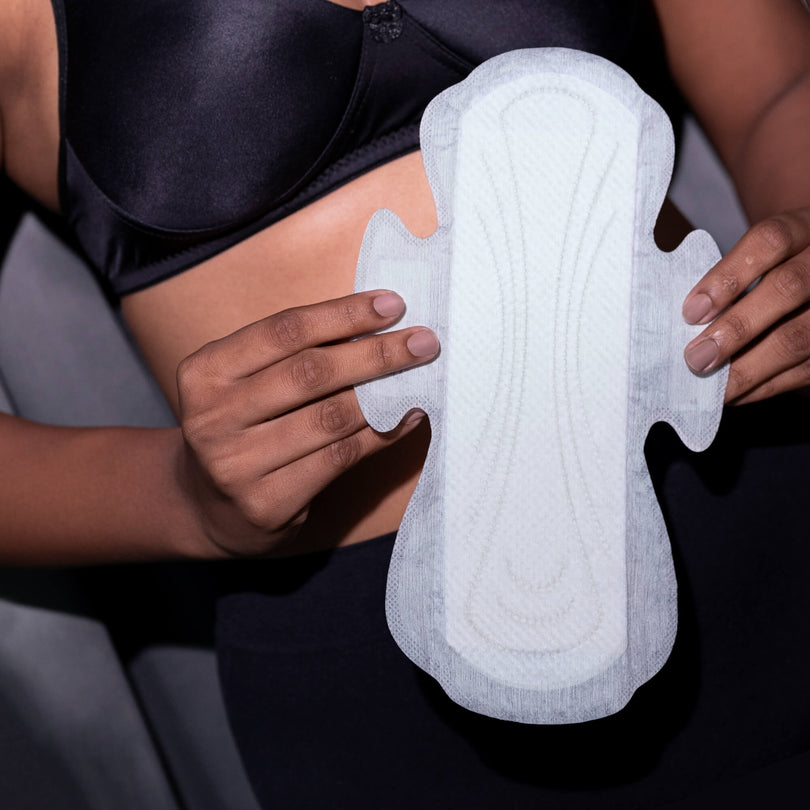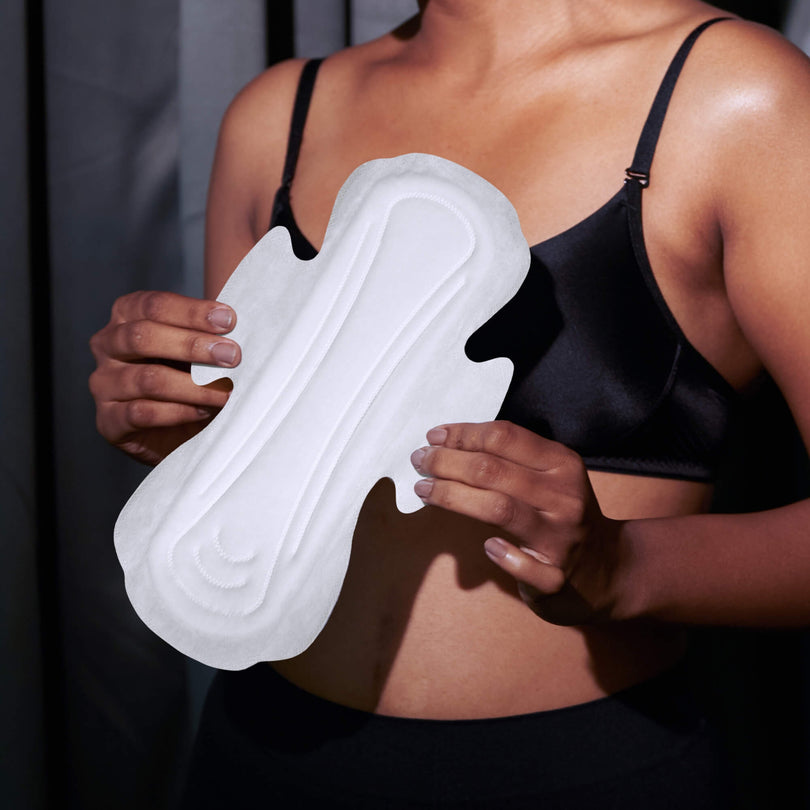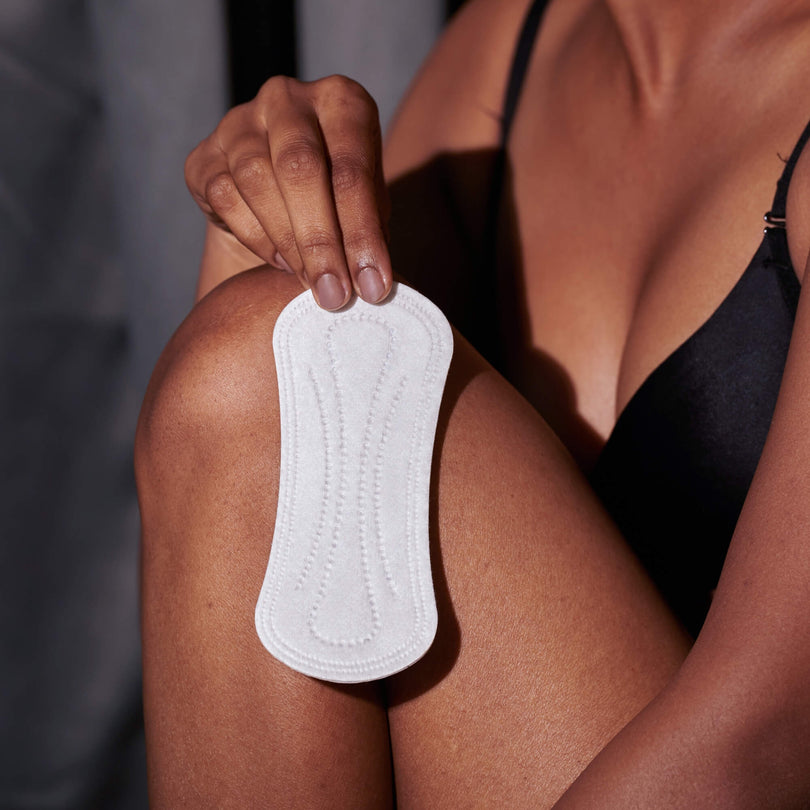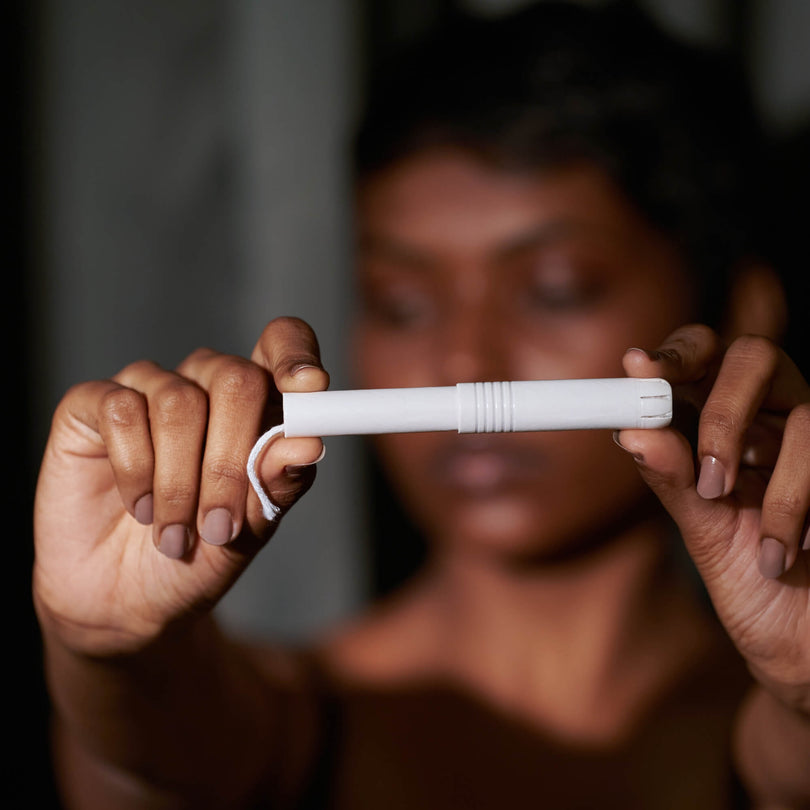No Greenwashing
As consumers become more environmentally-conscious, many brands, knowingly or unknowingly, often make marketing claims that can mislead consumers into thinking that a product is more environmentally-friendly than it actually is - this phenomenon is known as “Greenwashing”.
At Sparkle, we transparently disclose what goes into making our products, layer by layer, so that you can make informed purchasing decisions as a consumer.

Planet-friendly period care
Made with plant-based ingredients

No conventional plastics
No polypropylene or polyethylene in the top sheet, core or back sheet that could pollute the planet for over 500 years after disposal

No synthetic superabsorbents
No sodium polyacrylates that are derived from crude oil

No artificial fragrances or dyes
No harsh chemicals that may cause rashes or irritations
Plant-based Pads
USDA Certified Biobased pads crafted with plant-based ingredients.
No chlorine bleach. No dyes. No fragrances.

Conventional pads vs Sparkle pads
Conventional pads contain a large amount of petrochemical-based plastics that can pollute our planet for over 500 years after disposal.
Layers of a conventional pad:
- Top Sheet: Plastic (Polypropylene or Polyethylene)
- Absorbent Core: Mixed (Synthetic Super Absorbent Polymer (Sodium Polyacrylate) mixed with cellulose or synthetic fibers)
- Back Film: Plastic (Polyethylene)
- Wrapper: Plastic (Polyethylene)
We have designed Sparkle pads by replacing the conventional plastics from the top sheet, absorbent core, back film, and wrapper with plant-based ingredients.

Other “Green” pads vs Sparkle pads
Many “green” pads only use cotton in the center top sheet of the pad (which is around 8-10% of the total pad weight) and often mislead customers into thinking that the entire pad is “green” by highlighting the word “organic” on their packaging or by using other marketing claims.
Layers of other “Green” pads:
- Top sheet side barriers: Plastic (Polypropylene or Polyethylene)
- Center Top Sheet: Plant-based (Cotton or Cellulose)
- Absorbent Core: Mixed (Synthetic Super Absorbent Polymer (Sodium Polyacrylate) mixed with cellulose or synthetic fibers)
- Back Film: Plastic (Polyethylene)
- Wrapper: Plastic (Polyethylene)
We have designed Sparkle pads by replacing the conventional plastics from the top sheet, absorbent core, back film, and wrapper with plant-based ingredients.

Other “Greener” pads vs Sparkle pads
Many “greener” pads use plant-based materials in the top sheet, back sheet, and wrapper, but still end up using synthetic super absorbent gels (sodium polyacrylate, which is derived from crude oil) in the absorbent core.
Layers of other “Greener” pads:
- Top Sheet: Plant-based (Cellulose fibers)
- Absorbent Core: Mixed (Synthetic Super Absorbent Polymer (Sodium Polyacrylate) mixed with Cellulose)
- Back Film: Plant-based bioplastic
- Wrapper: Plant-based (Paper/bioplastic Wrapper)
When it comes to Sparkle pads, we do not use synthetic super absorbent polymers (sodium polyacrylate, which is derived from crude oil). The absorbent core of Sparkle pads is made using a porous fiber network of natural, sustainable, and renewable cellulose fibers, which effectively locks away the menstrual fluid.
Tampons made with Certified Organic Cotton
100% GOTS certified organic cotton tampons wrapped individually in paper.
Made without chlorine bleach, pesticides or fragrances.

Other tampons Vs Sparkle tampons
Most conventional tampon applicators are made using petrochemical-based plastic that can pollute our planet for around 500-600 years after disposal. Even the “plant-based" applicators that are made from sugarcane polyethylene (PE) behave exactly like the ones made from fossil fuel-based polyethylene applicators after disposal. Sparkle cardboard applicators are made using cellulose fibers which are plastic-free.
Most conventional tampons, (and even some organic tampons), use security veils made from polypropylene (a petrochemical-based plastic) to prevent fiber shedding. Sparkle tampons are made using an organic cotton security veil to ensure that our tampons aren’t prone to fiber loss.
Most conventional tampons are typically packed in plastic wrappers; Sparkle tampons are individually wrapped in paper so that we can say goodbye to plastics that could pollute our planet.
FAQ
You start by looking at the ingredients list on the packaging. If they have mentioned anything along the lines of “absorbent gel”, “gel technology”, “super absorbent polymers”, or “sodium polyacrylate”, it means that their pads contain super absorbent polymers (SAPs).
If they have NOT included a complete list of ingredients on their packaging, you can reach out to their Customer Care Department and put in a request for a full ingredient list so that you can make an informed purchase decision as a consumer.
If you do not get satisfactory answers and would like to take the matter into your own hands, you can try the following method. Well, you will be sacrificing one pad in the name of science, but at least you will find your answers. Just take one pad, cut the pad in half from the center using a regular pair of scissors, and pour half a glass of water on the pad.
If you see gel formation, you have successfully identified the synthetic super absorbent polymers (SAPs), which are crude oil derivatives. A rule of thumb is that the more gel you see, the higher the amount of synthetic superabsorbents used.
When crude oil is distilled at oil refineries, naphtha and additional by-products are obtained. One of these by-products called propylene is used to make acrylic acid, which is then used to create sodium polyacrylate, a synthetic superabsorbent polymer (SAP). Most commercially available superabsorbent hydrogels are cross-linked sodium polyacrylates.
Besides being non-biodegradable, these synthetic super absorbents are also not renewable by nature.
You can start by looking at the ingredient list on the packaging. If they have mentioned “polyethylene (PE)” or “polypropylene (PP)”, it means that their pads contain conventional petrochemical-based plastics. These synthetic plastics do not break down for over 500 years after disposal and continue to pollute our planet for centuries.
If they have not included the complete list of ingredients on their packaging, you can reach out to their Customer Care Department; all it takes from your side is you requesting more information about their ingredients so that you can make an informed purchase decision for your next cycle.




















